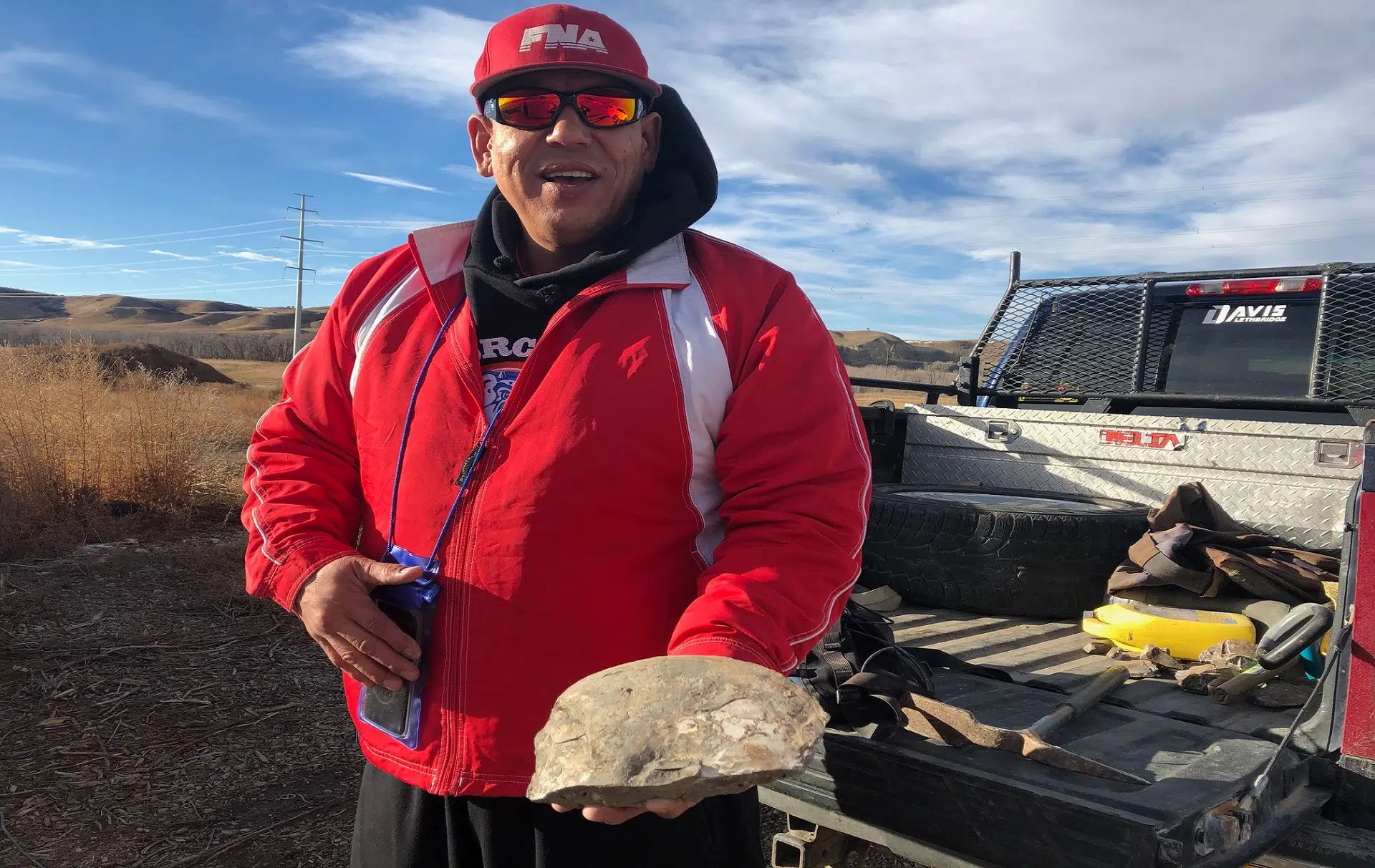
“A second chance at life”- Blood Tribe ammonite prospector gains international following
LETHBRIDGE – If it’s possible to run like a gazelle up a 300-foot shale hill at a 45-degree angle, that’s what Billy Jack does as he quickly scales a coulee directly over the Oldman River– and runs to a location where he believes he may find some precious ammonite.
10 years ago, the 44-year-old didn’t know whether he would survive flesh-eating disease that nearly took his leg, let alone be able to hike for hours to find the fossils that are so unique to southern Alberta.
“You have to be prepared for all wind conditions, snow, hail. It’s dangerous, but I wouldn’t change it for the world.” -Billy Jack
Jack was a single father raising his children and working in the construction field, when he was cut by a piece of metal near his knee. He says he didn’t clean the wound properly, and just two days later he was at Calgary’s Foothills hospital, fighting a massive infection that spread quickly up and down his leg.


